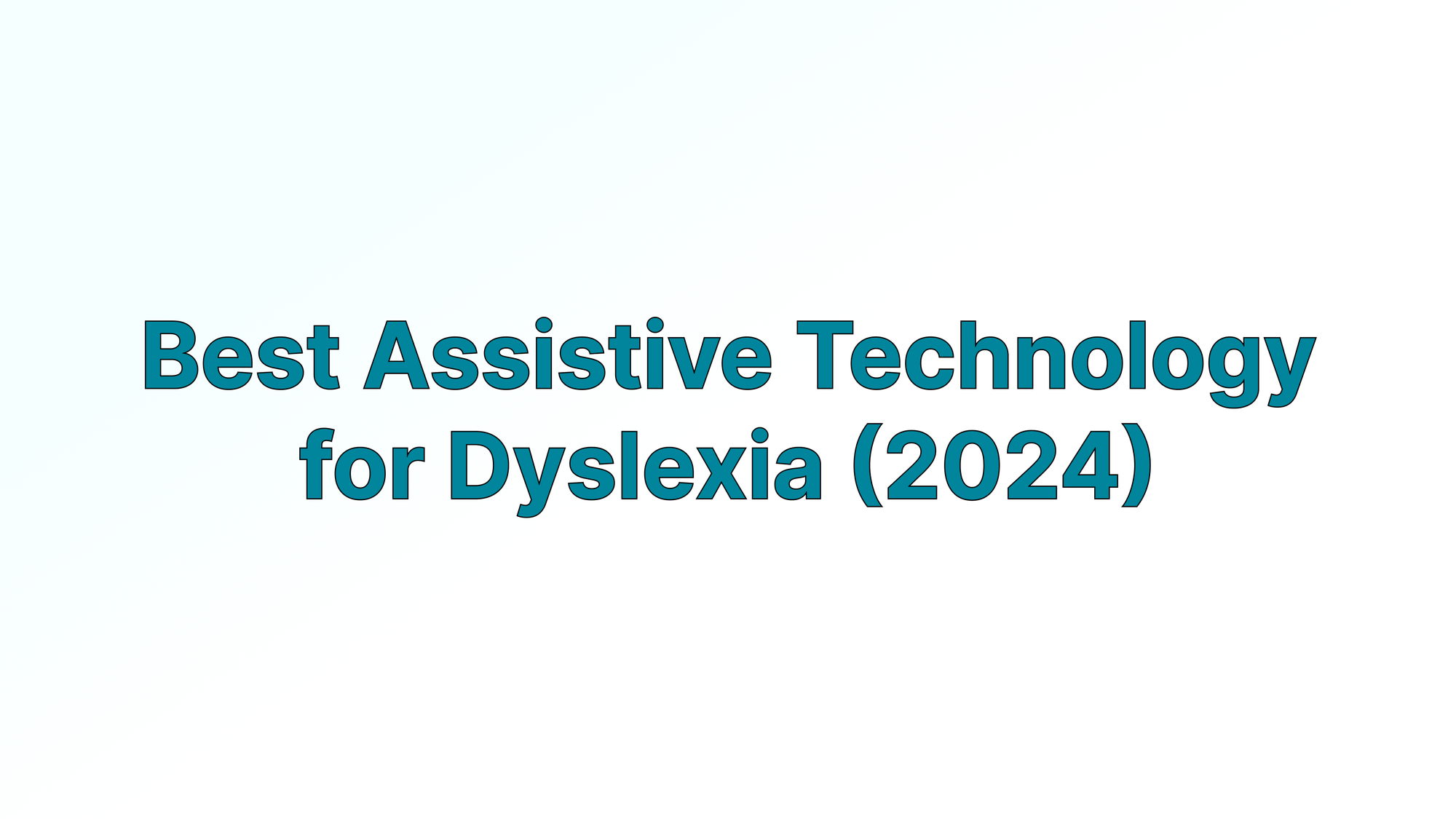Best Assistive Technology for Dyslexia (2024)
Dyslexia affects millions of people, making reading, writing, and spelling more challenging. Thankfully, assistive technology for dyslexia offers innovative solutions to help children and adults overcome these hurdles and reach their full potential.

Understanding Dyslexia and Its Challenges
What is Dyslexia?
Dyslexia is a neurodevelopmental condition that impacts an individual’s ability to read and process language.
Dyslexia does not affect intelligence but it can make traditional learning methods difficult.
Children and adults with dyslexia deal with multiple challenges at school or at work. These include:
- Difficulty reading fluently or accurately.
- Spelling errors and problems with written expression.
- Slower processing of written information.
- Struggles with organization and time management.
Lucky for us, many hardworking people around the world try to solve these challenges with assistive technology specifically for dyslexia.
Top Assistive Technology for Dyslexia
Speech-To-Text Tools: Help with writing & spelling
Instead of writing everything, how about just speaking it?
Speech-to-text software has many names. Sometimes it's called speech recognition, or dictation, or even talk-to-text.
At the end of the day, they all do the same thing:
They take your spoken words and turn them into text.
Some free tools like UseVoicy even work directly in your browser and your favorite tools like Gmail, Google Docs, Outlook, and Word.
On top of that, many of these tools also handle automatic punctuation and grammar corrections. What a time to be alive!
The benefits include reduced spelling errors, writing speed and efficiency, and natural-sounding text.
Text-to-Speech Tools: Help with reading and understanding
Text-to-speech does the exact opposite of speech-to-text tools.
These tools can read digital text aloud, helping individuals process written content more easily.
With the latest enhancements in artificial intelligence technology, these tools have become incredibly realistic. You can even select your own voice actors.
Speechify is a great example.
Word Prediction Software
These tools predict what the user is trying to type, offering suggestions to complete words or sentences.
- Popular options: Grammarly, Co:Writer, and WordQ.
- Benefits: Enhances writing fluency and minimizes spelling mistakes.
Mind Mapping and Organizational Tools
Tools like Inspiration Software and MindMeister help users visually organize thoughts and ideas, which is particularly helpful for planning essays or projects.
Rather than having to plan everything in your mind, you can simply create beautiful representations of your thoughts and ideas.
Specialized Reading Apps
Apps like Dyslexia Quest and Learning Ally provide dyslexia-friendly interfaces with features like customizable fonts, audio narration, and progress tracking.
Low Tech Assistive Technology for Dyslexia
Not every solution needs to be digital or complex. Low-tech tools are affordable, easy to use, and widely accessible.
Examples:
- Colored Overlays and Reading Guides: These help reduce visual stress and improve reading focus.
- Highlighting Tape and Line Magnifiers: Ideal for maintaining reading alignment on the page.
- Sticky Notes and Graphic Organizers: Useful for brainstorming and planning essays.
How to Help a Child with Dyslexia at Home
Parents can play a crucial role by creating an environment that supports learning and self-confidence. Here are some tips:
- Introduce assistive technology for dyslexia to make learning more accessible.
- Use tools like text-to-speech and speech-to-text apps for homework support.
- Encourage the use of accommodations for dyslexia, such as extended time on assignments.
FAQs
- What is the best assistive technology for students with dyslexia? Speech-to-text tools and text-to-speech apps are among the best for supporting students.
- Are there low tech assistive technologies for dyslexia? Yes, options include colored overlays, line magnifiers, and sticky notes.
- What accommodations are best for dyslexia in schools? Extra time, oral exams, and access to assistive technology tools.
- Can free assistive technologies be as effective as paid ones? Many free tools, like Google Docs Voice Typing, are just as effective as premium options.
- How can parents help children with dyslexia at home using assistive tools? Use a mix of speech-to-text apps, graphic organizers, and specialized reading software.
- Is assistive technology enough, or are other interventions necessary? Assistive technology is a key component but works best alongside tailored instruction and therapy.
Conclusion
Dyslexia doesn’t have to be a barrier to success. With a combination of high-tech and low-tech assistive technology for dyslexia, parents, educators, and individuals can create a more inclusive and empowering learning experience. Start exploring these tools today and discover what works best for your needs.

